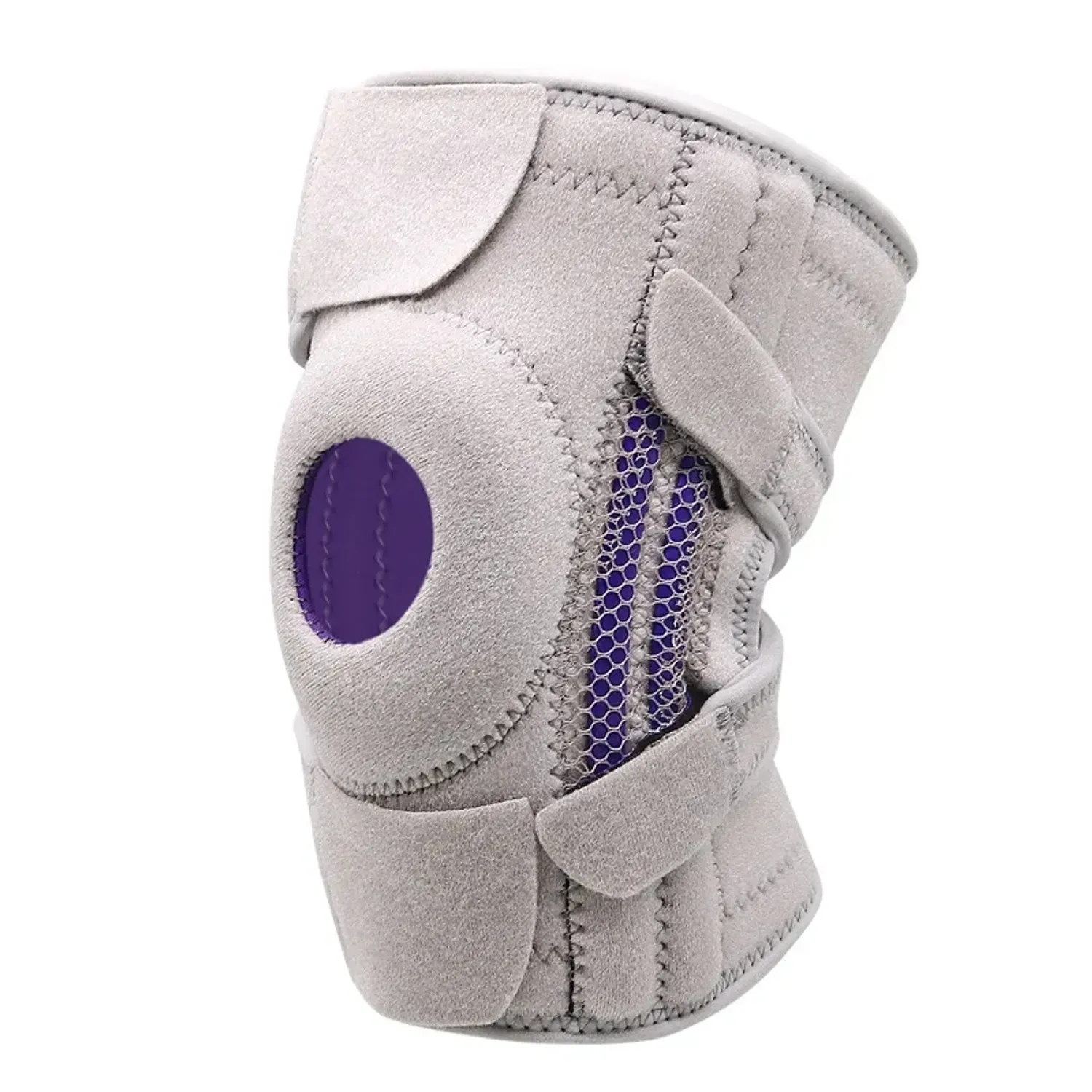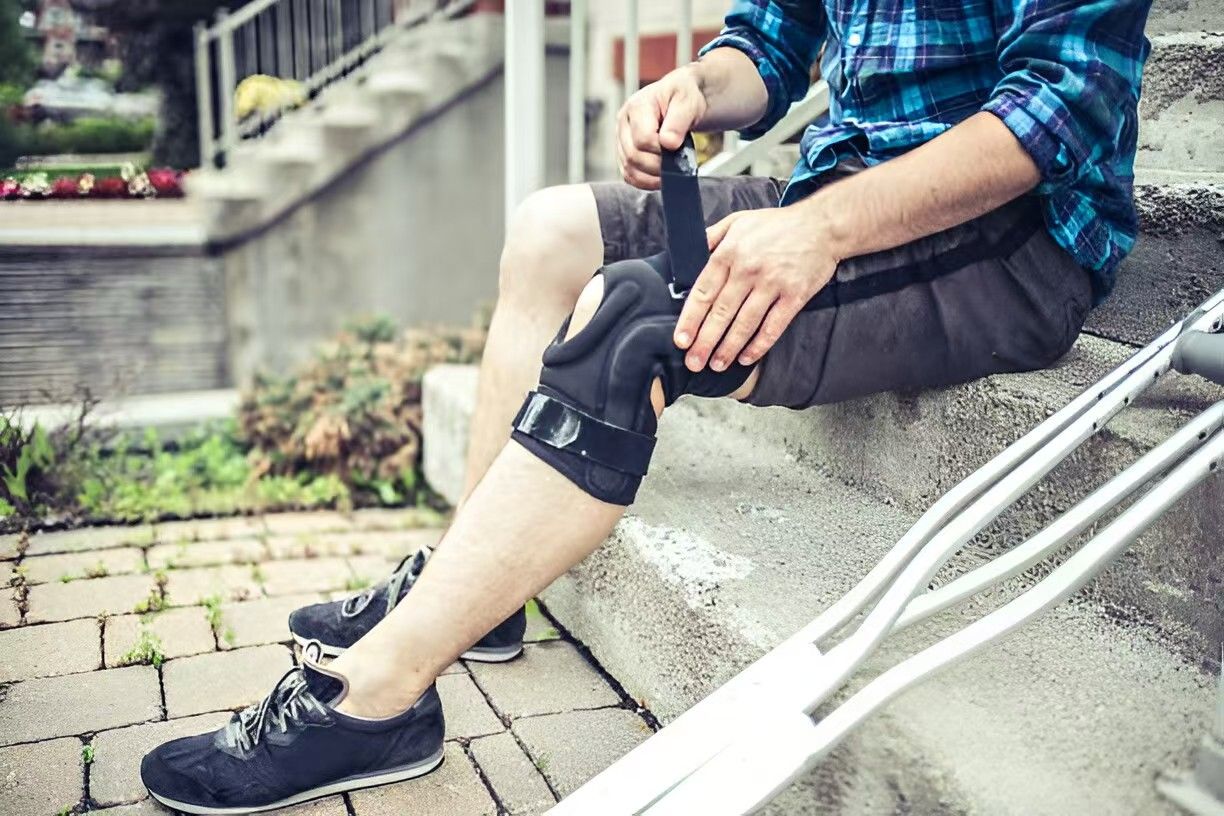john@lee-mat.com
+86-13510662576

GET QUOTE
Should Knee Support Be Tight or Loose?
Knee support plays a crucial role in maintaining joint stability, reducing pain, and preventing injuries. Whether you're recovering from an injury or looking to protect your knees during physical activities, finding the right knee support is essential. One common question arises: should knee support be tight or loose? This ongoing debate is important as the effectiveness of knee support can vary depending on its fit. Let's explore the factors that influence the need for knee support and the arguments for both tight and loose fits.
Understanding the Need for Knee Support
Knee support is often necessary for individuals suffering from various knee injuries and conditions, such as ligament tears, osteoarthritis, or post-surgery recovery. Proper knee support is vital in these cases to provide stability and reduce stress on the knee joint. It aids in rehabilitation by offering compression, which can help reduce swelling and pain. Additionally, knee support can prevent further injuries by providing extra protection and stability during activities that put strain on the knees, such as running, weightlifting, or playing sports.
The Case for Tight Knee Support
Tight knee support offers several benefits that make it a preferred choice for many. Firstly, it provides enhanced stability, which is crucial for maintaining proper joint alignment and preventing unwanted movements that could lead to injury. The compression from tight knee support helps in reducing inflammation and swelling by improving blood circulation around the joint. This is particularly beneficial for those recovering from injuries or surgeries, as it can accelerate the healing process.
Moreover, tight knee support is known to enhance performance during physical activities. Athletes and fitness enthusiasts often choose tighter knee braces or sleeves because they provide a sensation of stability and confidence, allowing them to perform movements with better form and reduced risk of injury. Tight knee support also ensures that the patella (kneecap) stays in place, which is important for controlling pain and improving overall joint function.
In summary, tight knee support offers stability, compression, and improved joint alignment, making it an effective option for injury prevention and enhanced performance. However, it's important to balance tightness to ensure comfort and avoid restricting circulation.
The Argument for Loose Knee Support
While tight knee support has its advantages, loose knee support offers its own set of benefits. One of the primary advantages is flexibility. Loose knee supports provide a greater range of motion, allowing for more natural movement during activities. This can be particularly beneficial for activities that require agility and quick changes in direction, such as basketball or dance.
Comfort is another significant advantage of loose knee support. It avoids the risk of pinching or cutting off circulation, which can be a concern with overly tight braces. Good circulation is essential for delivering nutrients to the injured area and promoting healing. Therefore, loose knee support can be ideal for those who need mild support without compromising comfort and mobility.
Certain individuals and activities may benefit more from loose knee support. For instance, during low-impact activities like walking or yoga, where stability is less of an issue, a looser fit can provide sufficient support without feeling restrictive. Additionally, for those with sensitive skin or conditions that affect blood flow, loose knee support might be the safer and more comfortable option.
Finding the Right Balance: Methods for Proper Fit
Achieving the right fit for your knee support is crucial for its effectiveness. There are several methods to ensure you get the proper fit, balancing both support and comfort.
One common method is using sizing charts provided by the manufacturer. These charts help match your knee measurements with the appropriate brace size. To measure accurately, use a flexible tape measure around your knee's mid-patella. Compare your measurement with the chart to find your size. This method ensures you select a brace that provides the right level of support without being too tight or too loose.
Another useful method is the two-finger test. After putting on your knee support, slide two fingers under the strap or sleeve. If your fingers fit comfortably, without too much space or tightness, then the fit is likely correct. If you struggle to fit even one finger, the support is too tight. If you can easily fit more than two fingers, it is too loose. Adjust accordingly to find the perfect balance.
When choosing the appropriate size, consider the type of activity and the design of the knee brace. For high-impact sports, a tighter fit may offer better protection. For casual use, a looser fit may suffice and provide more comfort.
Recommendations for Different Knee Support Options
There are various knee support options available, each suited for different needs and preferences. Understanding these options can help you choose the right one for your situation.
- Knee Sleeves: These provide mild support and compression. They are suitable for activities that require flexibility, such as running or light gym workouts. Knee sleeves should be snug but not overly tight, ensuring comfort and mobility.
- Soft-Hinged Braces: Offering more support than sleeves, these braces have hinges that provide additional stability. They are ideal for moderate activities and for individuals with mild knee instability. The fit should be secure but allow for some flexibility.
- Rigid-Hinged Braces: These braces are designed for more serious injuries or conditions, providing maximum support and stability. They are often used post-surgery or for significant ligament injuries. The fit needs to be snug to ensure the brace stays in place and provides the necessary support.
- Full-Leg Immobilizers: Used primarily after severe injuries or surgeries, these braces immobilize the knee to allow for proper healing. The fit should be snug to prevent movement but not so tight as to restrict circulation.
When selecting a knee support, consider the level of activity, the type of injury or condition, and the balance between tightness and comfort.
The Importance of Regular Assessment and Adjustment
Knee support needs can change over time, making regular assessment and adjustment crucial. As your knee heals or your activity levels change, the fit and type of support required may need to be reassessed.
Periodically check the fit of your knee support using the two-finger test and adjust as needed. If you notice changes in your knee condition, such as increased pain or swelling, it may be time to reevaluate your support choice.
Seeking professional advice from a healthcare provider or physical therapist can provide valuable insights into the best knee support for your specific needs. They can help you make informed decisions and ensure that your knee brace is providing optimal support and comfort. Regularly updating your knee support to match your current needs will help you maintain knee health and prevent further injuries.
Conclusion
As we conclude our discussion on the debate between tight and loose knee support, it becomes evident that finding the perfect balance is crucial for optimal knee health. Prioritizing proper fit is paramount in ensuring effective knee support. Whether you lean towards the stability of tight compression sleeves or the flexibility of looser braces, the key lies in finding a support system that offers both comfort and functionality.
In light of this, we highly recommend exploring Lee-Mat's range of knee support options. With a commitment to quality and innovation, Lee-Mat provides a diverse selection of braces and supports tailored to meet various needs and preferences. By investing in Lee-Mat knee support, you not only prioritize your knee health but also benefit from products designed with your comfort and performance in mind. Take the next step towards optimal knee support and explore Lee-Mat's offerings today.


